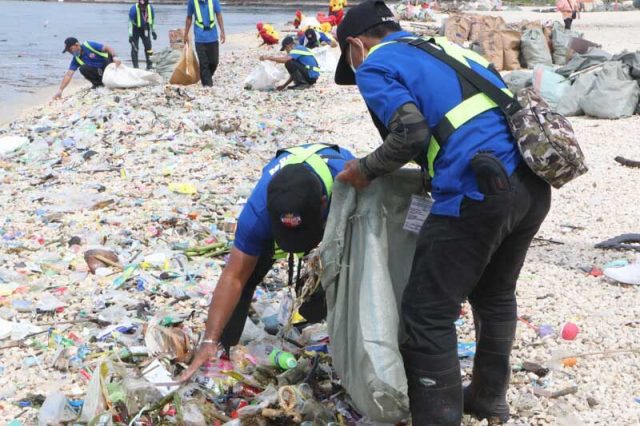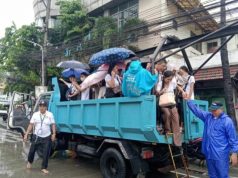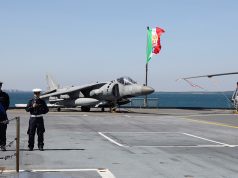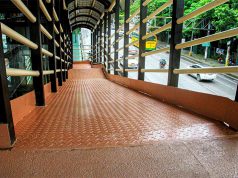
Being near the track of Typhoon “Karding” (international name: Noru), Manila’s dolomite beach was once again talked about online after heaps of trash were found on its coastline on Monday morning.
State media PTV aired a report about the condition of the artificial beach after the tropical cyclone traversed parts of Luzon, including Metro Manila, on Sunday.
“Totoo nga na ang basurang itinapon lamang natin kung saan, tiyak na babalik din sa atin,” its correspondent commented.
“Sa may pampang ng dolomite beach, tambak ang samu’t saring basura gaya ng mga plastik na bote, straw, pakete ng pagkain, lata, tsinelas, kawayan, inanod na water lily, at iba pang dumi,” the reporter said.
The reporter added that medical wastes such as used face masks and dextrose were also found in the pile of trash.
The day “Karding” traversed the country, there were already some Filipinos who thought of the dolomite beach’s condition as Manila was near the path of the tropical cyclone.
“Musta na kaya ‘yung dolomite?,” a Twitter user asked on Sunday.
“Naku! Bagyo! Manila is in Signal #4. Magiging basura beach [‘yung] dolomite beach,” another online user wrote.
“Nasaan na ‘yung mga panatiko?? Ito na po ‘yung dolomite niyo, paano na ‘yung mental health niyo ohh, anod na anod na ng bagyo ‘yung ipinagmamalaki niyong dolomite beach na milyon ang halaga. Sayang pera, ‘di ba!?” exclaimed a different Pinoy.
By Monday, news reports showed pictures and videos of the artificial beach in the nation’s capital.
According to PTV, employees of the Department of Environment and Natural Resources (DENR) were already in the area to clean up the area as of 7:52 a.m. on Monday.
Personnel from the Metro Manila Development Authority were also spotted picking up trash on its coastline.
Some blamed their fellow Filipinos for not being mindful of their trash upon learning of the dolomite beach’s condition.
“Ang problema sa taong bayan ay wala disiplina sa pagtatapon ng basura,” a Facebook user wrote.
“Ganyan na nga sitwasyon diyan sa Maynila, marami pa [rin] wala [disiplina] huwag itapon basura kung [saan saan],” another online user commented.
Others criticized the existence of the artificial beach project, believing the funds could have been spent on other meaningful initiatives.
“We could have had so many different designs that would have helped [revitalize] Manila Bay but look what we got,” a Filipino from Twitter said.
“The MMDA workers can work on other public areas if there is no Dolomite sand. #Priorities,” another Twitter user commented, suggesting other more high-traffic areas that needed clean-ups as well in the aftermath.
Karding made landfall as a super typhoon in Quezon province. It traversed Aurora and parts of Central Luzon before exiting the landmass as a typhoon.
Parts of Metro Manila, Northern Luzon and Southern Luzon were also affected by its movement.
Reports said that authorities preemptively evacuated over 600 families in the city of Manila.
The highest tropical cyclone wind signal raised in the city was Signal No. 4.
“Karding” left at least six people dead and several Filipinos stranded and displaced after torrential rains and fierce winds.
This was not the first time the dolomite beach gained buzz following a weather disturbance.
Earlier this month, criticisms about the project’s existence were made online after past monsoon rains and tropical cyclones left swathes of garbage along its coastline and the surrounding communities.
RELATED: ‘Sayang ang pera’: Netizens dismayed over litter on Manila’s dolomite beach
The artificial land was developed in 2020 as part of the DENR’s bigger plan to rehabilitate the heavily polluted Manila Bay.
According to the agency, the “beach nourishment” initiative aims to rehabilitate and protect the coastal resources in the area to prevent coastal flooding and erosion.









